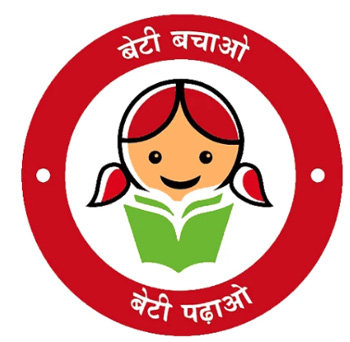Bhubaneswar: The Central government had launched the “Beti Bachao Beti Padhao” (BBBP) scheme on January 22, 2015 to address the alarming gender imbalance and declining child sex ratio in India.
Various initiatives have been implemented by the Odisha Government to achieve the aims and goals of BBBP scheme. Four districts- Ganjam, Dhenkanal, Keonjhar and Deogarh have excelled in implementing the central scheme.
Under BBBP, Nirbhaya Kadhi (Fearless Bud), Mo Gelha Jiya (My Dear Daughter) were taken up in Ganjam district, while Kalpana Avijan implemented in Dhenkanal, Swarna Kalika in Keonjhar and Veerangana Yojana in Deogarh district.
These schemes are launched for adolescent girlsto make them say “no to child marriage”, to combat sex selection and female foeticide, to continue their study with higher education and to boost Self-Esteem and Confidence through martial arts and self-defence techniques, officials said.
Nirbhay Kadhi, the fearless adolescents is the special initiative of the Ganjam District Administration under BBBP to attain a just order fit for girl child. 183,933 adolescent girls of nearly 3,309 villages in Ganjam district in the age group of 11-18 years are covered under Nirbhaya Kadhi Scheme through awareness meetings.
Another satellite programme of BBBP launched in the district is Mo Gelha Jhia (My Lovely Daughter) to combat sex selection and female foeticide in Ganjam district.
As an outcome on 3rd January 2022, the administration declared Ganjam district as child marriage free. From 2019 to October 2024, almost 20 out of 953 child marriages were successfully prevented with the help of Child Marriage Prohibition Officers (CMPOs), District Child Protection Units (DCPU), Child line and Police.
Mostly 450,000 students from 3,614 government schools made a public declaration to say ‘No’ to child marriage. An award of 5,000 is given to those who provided first information about child marriage, the officials said.
In Dhenkanal district, the scheme was launched to track and monitor adolescent girls (10-19 years) and prevent child marriage through committees at various levels. This scheme prevented 343 child marriages between 2019-2024.
About 1,13,515 adolescent girls identified and enrolled under the scheme while 4,45,000 students from 3,425 schools declared saying ‘No’ to child marriage in the form of oath taking in a public place.
Awareness programmes were organized in 1,211 villages and strategic forums formed for engagement with youth and traditional leaders.
In Keonjhar district, through Swarna Kalika scheme awareness raised in villages on the harmful effects of child marriage. Over 2,000 stakeholders involved in the campaign Promoted ADVIKA app for awareness and intervention in Keonjhar district of Odisha.
Successful district-level campaigns involving adolescents and community leaders and strengthened community systems to protect children resulted in reduction in child marriages by 50 percent by 2024 through awareness campaigns and community mobilization.
In Deoghar district, Veerangana scheme was launched with an objective to boost self-esteem and confidence in the adolescent girls through martial arts and self-defence techniques to keep protected girls from cheap comments, eve-teasing, harassment, being followed, groping, molestation, etc., facing in day-to-day affair through defending skills.
A 30-day training camp on self-defence and martial arts under was organized in the Indoor Stadium. More than 500 adolescents from various schools and colleges, in the age group of 14-19 years participated in the 30-day long training camp on Martial Art. About 300 guardians and teachers were also involved and imparted orientation on the legal rights and entitlements of the girls,
As a way forward, 50 female master trainers as developed from this initiative, imparted short training sessions on the basics of martial arts in 300 schools of rural pockets extending the training to around 6,000 girl students.
The officials informed that 50 female master trainers developed from this initiative, imparted short training sessions on the basics of martial arts in 300 schools of rural pockets extending the training to around 6,000 girl students.


